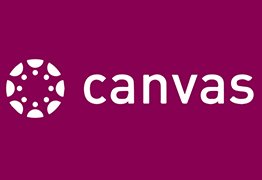For students attending the course Diet, physical activity and fitness - assessment and evaluation (10 credits) course code 4NT023
This course aims to give you a deeper understanding of modern methods for assessing dietary intake, physical activity and fitness, both at the individual and group level. The course covers study design, choice of assessment methodology, body composition, recommendations, calculation of study power and number of measurement days. Data is collected on all the students and statistical software will be used to compare methods and assess their validity and precision.
Syllabus

Introduction to the course
The course provides a deeper understanding of how to evaluate reported nutrient intake and physical activity for different groups in comparison to relevant reference values. The role of quantitative and qualitative aspects of physical activity to promote (global) health and to prevent and treat disease is also covered.
The course consists of lectures (live and recorded), discussions, workshops, group work and a number of practical assessments for physical activity, fitness and body composition, complemented with dietary data from the course “Diet and health - scientific evidence, recommendations and sustainability” from earlier in the programme.
You will write individual assignments and there will be a group work and an individual report, combined with a take-home exam.
Schedule in Time Edit
Course Evaluation
Contacts
Johanna Sandborg
Course directorSara Bruce
Educational administratorCourse literature and useful resources
The course literature consist of scientific articles and reports that will be provided electronically when the course starts and "ACSM's Fitness Assessment Manual, 6th edition"
Wolters Kluwer Health, 2021 - 208 pages, ISBN:9781975164454
Diet, Anthropometry and Physical Activity resource
Diet, physical activity, and body composition are major determinants of non-communicable diseases such as type 2 diabetes, cardiovascular disease and cancer. Accurate and appropriate methods of dietary assessment, physical activity assessment and anthropometry are instrumental in determining exposure in epidemiologic studies and assessing the effect of interventions, among others. The University of Cambridge, together with the Medical Research Council and the National Institute for Health Research (UK) have created a one-stop, high quality toolkit called the "DAPA Measurement Toolkit" which is a free web-based resource to assist researchers and public health professionals to identify methods for the assessment of diet, anthropometry and physical activity: Diet, Anthropometry and Physical Activity (DAPA) Measurement Toolkit.
Biostatistics recources
A good resource to brush up on Biostatistics and prepare for the course is the online module from the Boston University (School of Public Health). They also have a very good module on Epidemiology. The link to the Biostatistics module can be found here: BU modules: choose Biostatistics. Another great statistics resource is the website created by Andy Field at Discovering Statistics. The Statistics Hell-P section covers a range of topics with varying degrees of difficulty.
In addition, course-specific videos on biostatistics and tutorials will be made available to students prior to the course by the course leader.
Canvas
Canvas is the e-learning platform we are using at KI. Here you will find course material, assignments and a possibility to communicate with students and teachers. One to two weeks before the course starts you will as a student get an invitation by e-mail to the address you used at antagning.se. After accepting the invitation you should be able to access the course.

Log in to Canvas
Once you are admitted to the programme you may log in to Canvas for more information on your courses.

Student at KI
Here you can find all the information you need for your studies.
